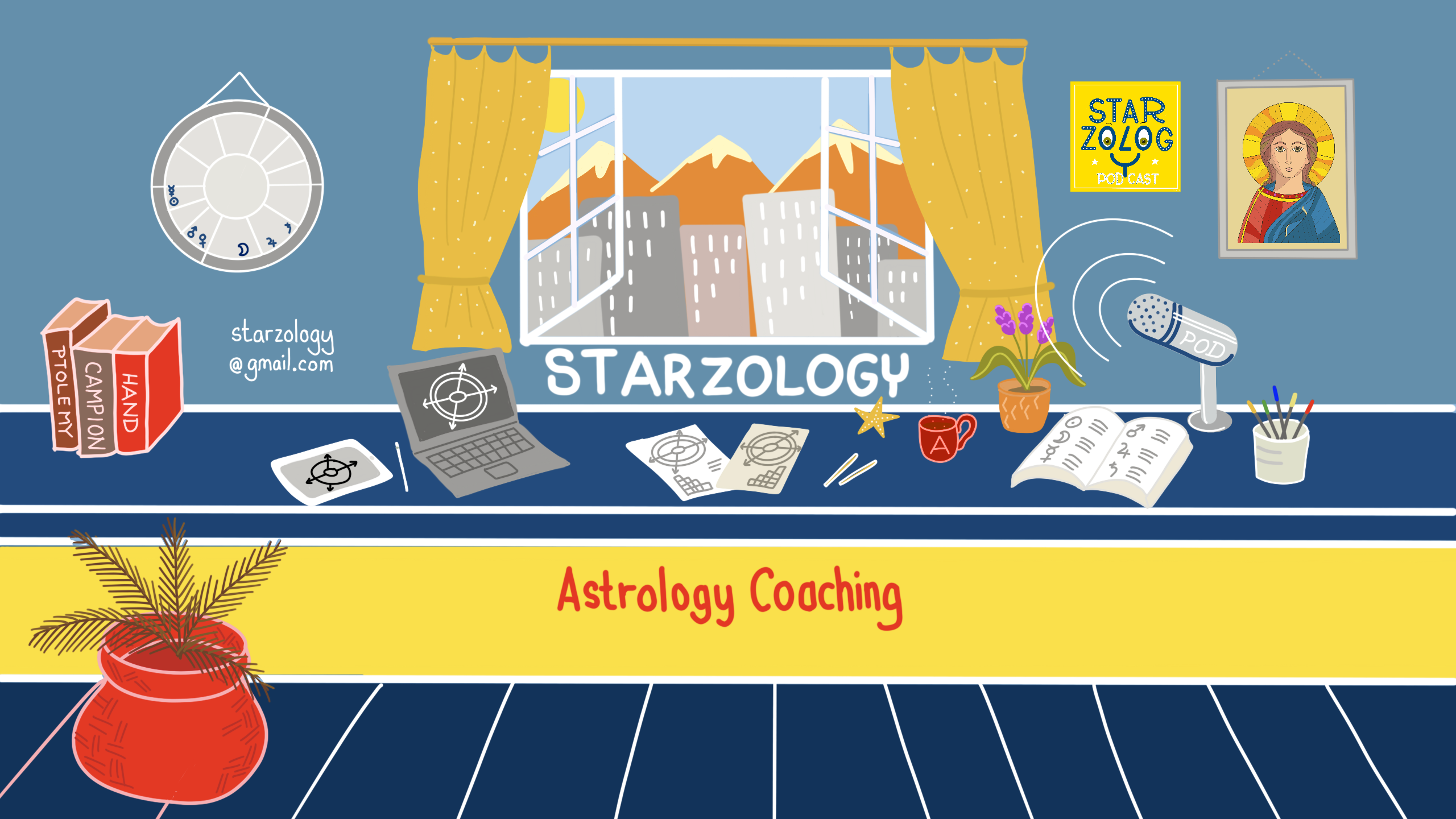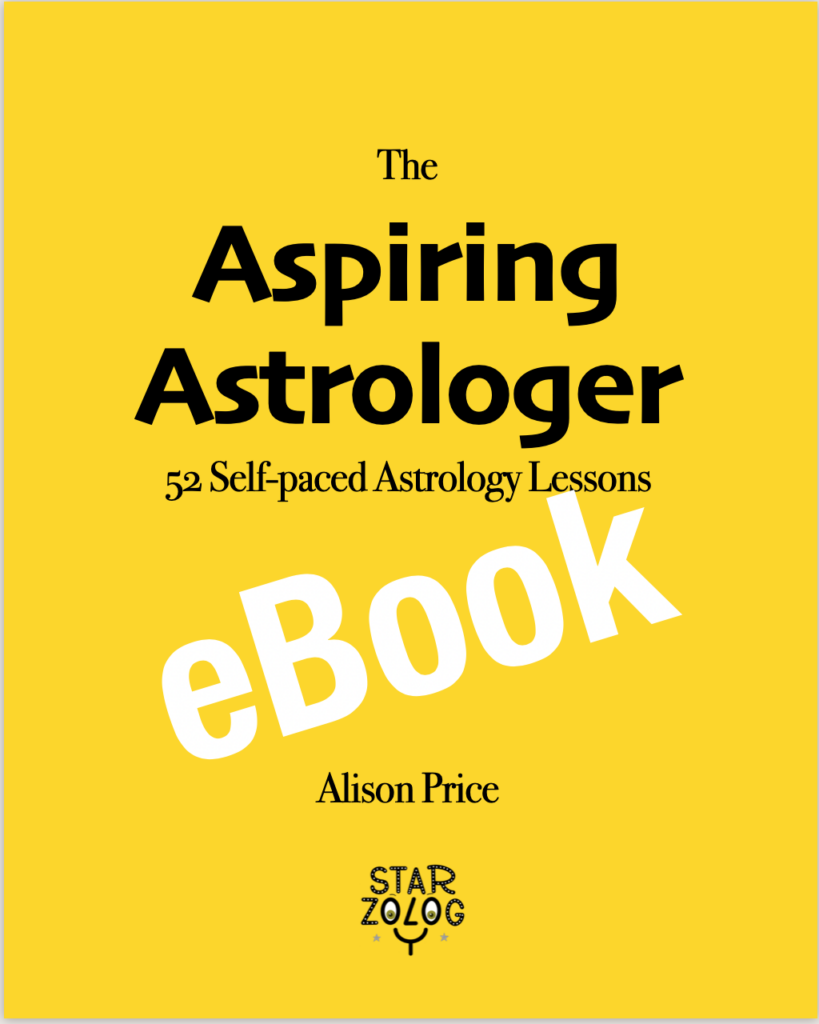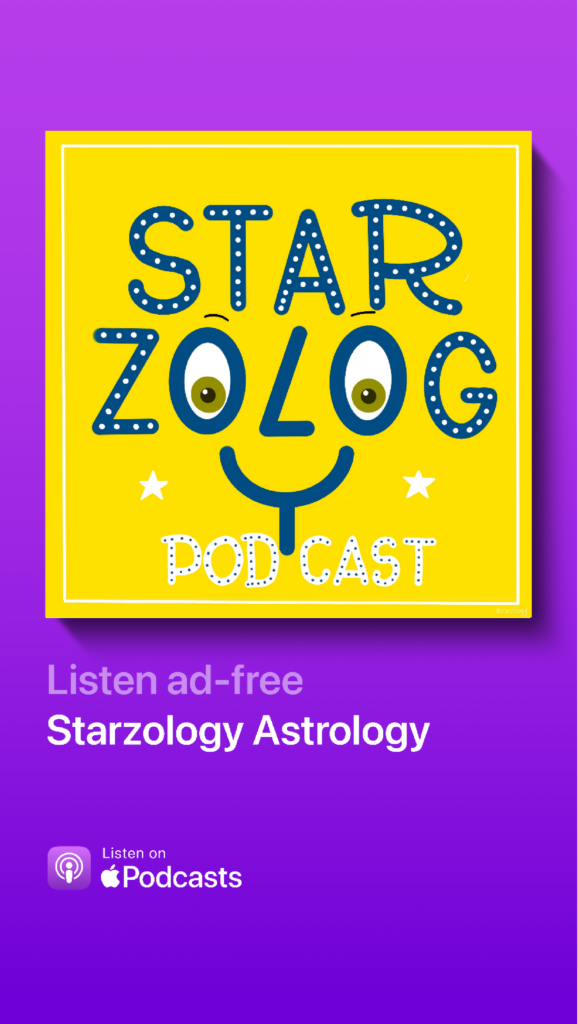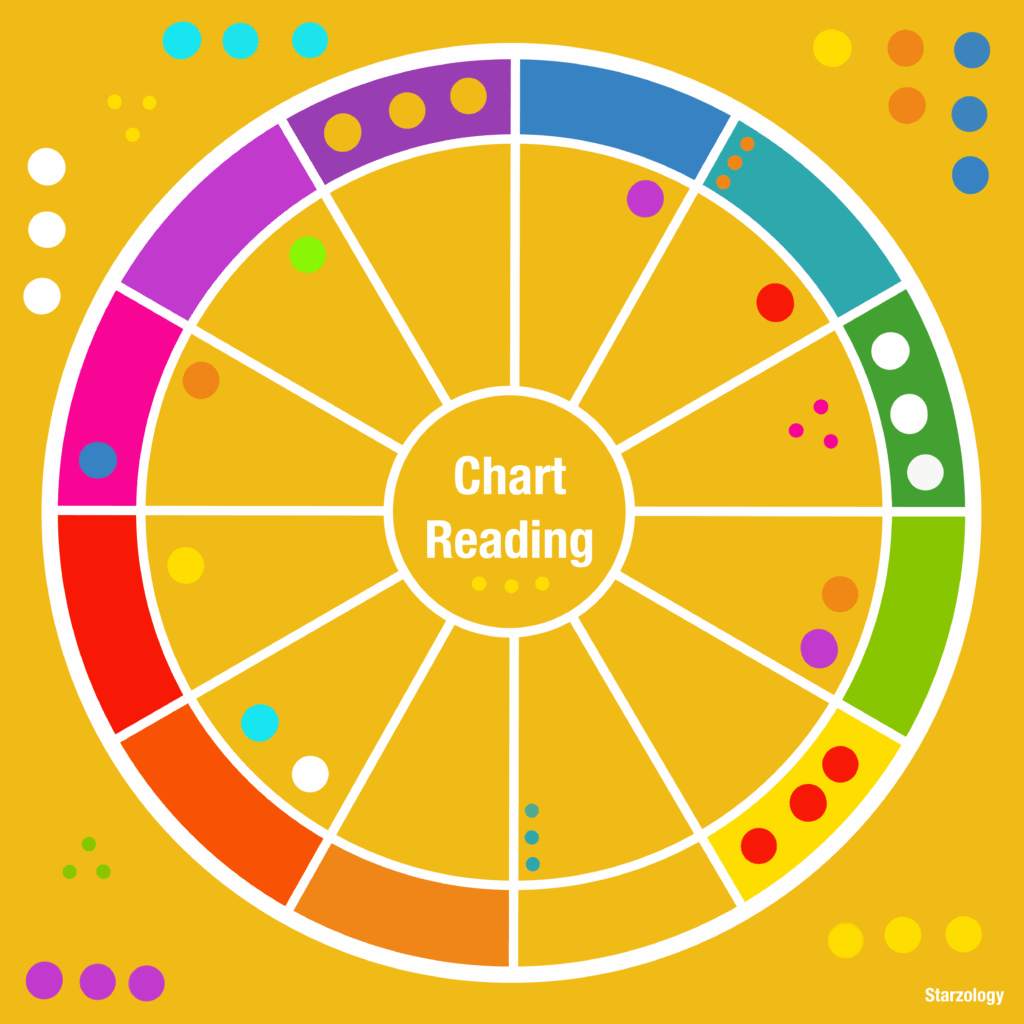Author: Alison Price Published: March 2024
Interpretation Overwhelm
When you’re just starting to learn how to read a chart, it can feel like there’s a lot to take in. Whether you’re a hobbyist, an amateur, or a student astrologer, it’s helpful to start by focusing on the essentials.
You don’t have to tackle everything at once; instead, you can gradually explore the finer details of chart reading over time.
The key is to prioritize understanding the main elements of the chart first.
Many people wonder where to begin with chart reading because there’s so much to explore. It’s true, there are countless details, some obvious and some more subtle, waiting to be discovered.
However, you don’t need to try to absorb everything all at once, especially with your next chart.
To help ease the overwhelm of starting out as an astrologer, here are three strategies you can use when approaching a chart for the first time.
Interpretation Overwhelm: Visible Planets
Planets to Display
One approach to reduce overwhelm is to focus solely on the visible planets.
Traditionally, there are seven visible planets: the Sun, the Moon, Mercury, Venus, Mars, Jupiter, and Saturn.
To start, I recommend displaying only these planets on the chart.
Planets to Cut Out
You won’t include Uranus, Neptune, and Pluto, or factors like Chiron, Eris, and other asteroids.
Also, you won’t show into the lunar nodes or other specific points for now.
These topics are best saved for later exploration.
Interpretation Overwhelm: Ptolemaic Aspects
Big Five Aspects
To further simplify your interpretation process, focus only on the five Ptolemaic aspects.
These include the conjunction, opposition, trine, square, and sextile.
These are the essential aspects you should concentrate on initially.
Aspects To Ignore
You should disregard the minor aspects, including the semi-sextile, quincunx, semi-square, and sesquiquadrate.
Also, ignore any aspects beyond the basic five, such as quintiles, septiles, noviles, and deciles.
While these lesser-used aspects have their significance, you don’t need to focus on them when you’re just starting out.
Interpretation Overwhelm: Tighten Orbs
Cut Orbs
Next, I recommend halving the orbs.
By doing so, you’ll focus only on the aspects that are tighter in orb, making them more significant in the chart reading.
This adjustment helps streamline your interpretation process.
Conjunctions, Oppositions, Trines and Squares
Reduce the orb for the conjunction from its original 8° to 4°, allowing only conjunctions with a 4° orb or less to appear in the chart.
Similarly, adjust the orbs for oppositions, trines and squares to also have a 4° orb.
This ensures that only tighter aspects are considered in the chart analysis.
Sextiles
When halving the orbs, decrease the orb for the sextile from 4° to 2°.
With fewer aspects to interpret, you’ll focus on the ones that matter most initially.
Keep in mind that tighter orbs indicate greater significance for the aspect.
Example Chart: Andy Warhol
Let’s have a look at an example chart with these three ways of reducing overwhelm applied.
Chart Data
We’ll take the chart for Andy Warhol who was born at 6:30 AM on August the 6th, 1928 in Pittsburgh, PA, USA.


Visible Planets Only
In a typical full birth chart, which is what I usually use, there are 12 planets and four points displayed.
However, this chart also includes 55 aspects in the aspectarian, which a professional astrologer would interpret, but you don’t need to dig into all of them at the beginning.
By simplifying the display to include only the visible planets, the chart becomes much easier to read.
You’ll immediately notice that it’s simpler to interpret, with only seven aspects in the aspectarian for you to understand.


Ptolemaic
When we narrow down the aspects to the five Ptolemaic ones, the chart becomes significantly easier to interpret.
Now, there are only 6 aspects to decipher, comprising 3 squares and 3 trines.


Cut Orbs
By halving the orbs, we further reduce the number of aspects to deal with. Now, there are only 3 aspects remaining.
However, it’s important to note that the Fire Grand Trine is the only aspect pattern left in this chart, underscoring the supreme significance of this major aspect pattern and the 3 trines that comprise it for this specific chart reading.


Take Away
Interpretation Overwhelm
By implementing all three steps to reduce the amount of data for interpretation, the information is significantly pared down.
In Andy Warhol’s chart, we’re left with only 3 aspects.
However, it’s not necessary to take all three steps every time you want to reduce the quantity of information to interpret. You can opt for just one of the steps mentioned above.
For instance, you might choose to retain all the planets in the chart but simply reduce the orbs.
Alternatively, you could keep all the planets but focus solely on Ptolemaic aspects.
Either approach will effectively decrease the amount of information you need to interpret.
Sign and House
For your chart reading you will still have to interpret every planet which is displayed by its sign and house. That’s where using the visible planets comes in.
Aspects
As you begin to trim down both the aspect set and the orbs within it, you’ll notice a considerable decrease in the workload for each chart.
The beauty of this approach to reducing information overwhelm is that what remains are the crucial Ptolemaic aspects involving visible planets.
These aspects form the backbone of the chart reading process.
Creating Information Overwhelm
Let’s approach this from another angle.
Whenever you introduce additional elements to a chart, such as asteroids or fixed stars, you inevitably increase the interpretation load.
Each new component requires consideration by sign, house and aspect, adding more work to the process.
Moreover, if you decide to include quintile aspects, while intriguing, it further burdens your interpretation load since these aspects also need to be analyzed.
The key takeaway here is that the more you add to a chart, the more it contributes to your interpretation workload.
Conversely, simplifying what’s displayed within the chart brings clarity to what truly matters, focusing on the tight, Ptolemaic aspects between visible planets.
Let me know which of these 3 tips you will try to reduce your chart information load and improve your chart readings.

Pin this to read later
Author Bio
Alison Price: Professional Astrologer
Alison helps you uncover your individual creativity and lead a fulfilling life using your own astrology. She shares her wisdom from the heart with a touch of humor. She offers Consultations for everyone and Coaching for Aspiring Astrologers.
If you’d like to get in touch with Alison, you can reach out to her via email at starzology@gmail.com.
More Articles
If you enjoyed this post, you may like some more astrology related articles from our blog.

6th House Planets
In astrology, planets in the 6th HOUSE suggest how you work, your daily habits and how your health is generally.

Uranus in the Houses
In astrology, the planet URANUS in the HOUSES can indicate in which area of your life you express your unique genius.

Self-care for Astrologers
Author: Alison Price - Published: December 2024 Self-Care for Astrologers Personal Well-being Why self-care is Crucial This week I want to talk about some self-care topics that relate directly to astrologers. As a practicing astrologer, you are like a conduit,...






